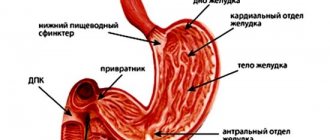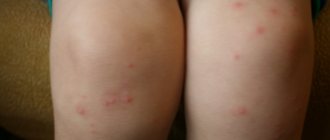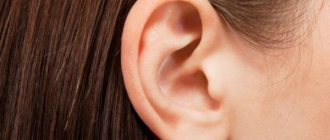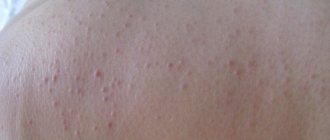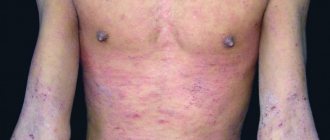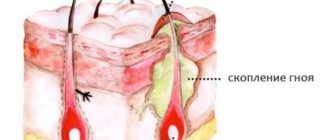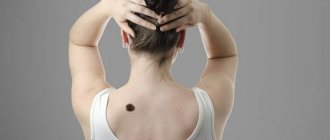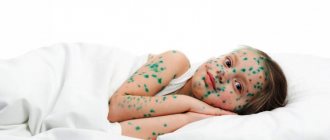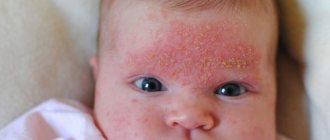Skin rashes are a phenomenon that affects almost every baby in the first year of life. There are many reasons why pimples appear. Some parents panic, starting to treat the child with all kinds of ointments and creams, and rush headlong to the doctor. Others do not attach much importance to the rash and do nothing. Both situations are extremes. Caring parents need to find a middle ground.
To understand how to act in the event of a rash, you need to understand at least a little about the main types and the reasons that cause it. Pimples may indicate an allergic reaction, overheating of the newborn, or the presence of an infectious disease. They appear as a reaction to insect bites. Did you know that there is a hormonal rash in newborns? We'll talk about her.
What is hormonal rash in newborns
Many parents face this disease. They may hear different names for this pathology, which are synonyms, for example:
- hormonal rashes in newborns;
- neonatal pustulosis of newborns;
- milia in newborns;
- three-week rash;
- skin bloom;
- acne or baby acne.
Similar rashes appear in ¾ of all babies; the nature of the rash, regardless of its name, always remains the same. Doctors say that this is a way to rid the baby of maternal hormones, which were supplied in large quantities during pregnancy and still enter the baby's body through mother's milk if the woman is breastfeeding. This is one of the child’s adaptation mechanisms to the unusual environment around him. The period lasts about 1.5 months, it is called a hormonal or sexual crisis.
- Interdental brush
- How to lose weight during menopause
- DIY crafts on the theme of Space
The peak of this condition occurs at the end of the 1st week after the birth of the child. The crisis manifests itself in both sexes, external signs may be different:
- may engorgement (swell) of the mammary glands;
- girls experience menstrual-like bleeding and vulvovaginitis;
- swelling of the genital organs (scrotum in boys).
Effective treatment: scheme
The treatment regimen used to treat teenage acne includes a set of measures designed to effectively combat the disease. These include:
- Switching to dietary nutrition;
- Introduction to the diet of foods containing vitamins A and E;
- Refusal of cosmetics based on lanolin and paraffin;
- Use of topical zinc-based or retinoid-based products;
- Antibiotic therapy in the presence of papules and ulcers.
Compliance with these rules will help you quickly get rid of the manifestations of the disease, which is especially painful in adolescence due to the loss of external attractiveness.
Difference from infection
A tendency to hormonal changes of a pathological nature appears in a newborn during the period of intrauterine development, when the mother’s body in the 3rd trimester begins to actively produce estrogen in active preparation for labor. After birth, a malfunction in the endocrine system does not manifest itself in any way until the 3rd week of the baby’s independent life, thereby causing panic in adults.
It is very simple to distinguish a hormonal rash from an allergic reaction, and even more so from an infection - outwardly, acne covers only the skin of the face and neck, and the scalp. Additionally, the baby exhibits swelling of the mammary glands, testicles and scrotum.
Other obvious distinguishing features are:
- No fever or signs of inflammation. If the rash is viral, inflammatory, infectious or microbial in nature, the appearance of pustules is always associated with an increase in body temperature to subfebrile levels (38–39 degrees), frequent urination, and loud crying due to body aches.
- The presence of purulent accumulations or cloudy water in the cavity of the pustule. Measles, scarlet fever, diphtheria, chickenpox and other complex infections are always associated with copious discharge of pus through the epidermis. Hormonal changes do not include any third-party agents, only fatty (sebaceous) deposits or regular acne.
- Openness and closedness of skin rashes. The infection always spreads intramuscularly, so the rashes are tightly closed by the skin and burst inside it. In addition, each type of skin lesion has a clear localization, and an experienced doctor, even by appearance, is able to tell which virus the child “caught.” The exception is the herpes simplex virus, which affects the area of the nasolabial fold and looks like an overgrowth of wen.
- Presence of itching. Hormonal rashes do not cause discomfort to the baby. He doesn't try to comb them, they don't peel or turn red.
Newborn acne
Newborn acne is a skin rash in the form of small white dots, located mainly on the skin of the chin, cheeks and nasolabial folds. Neonatal acne occurs in children during the first 6 months of life and is associated with hormonal changes occurring in the body. When they appear, adequate care of the baby’s facial skin is important, aimed at preventing inflammation of acne. Diagnosis and treatment of acne in newborns are necessary only when they become infected with the development of an inflammatory reaction. In most cases, newborn acne goes away spontaneously within a few weeks.
Manifestations of acne in newborns
Newborn acne is a small number of individual closed or open comedones. Closed comedones look like pearly white or yellowish papules 1-2mm in size. Over time, they can transform into open comedones, which look like characteristic blackheads. In some cases, along with comedones, isolated pustules or papules, surrounded by a pinkish rim, may appear on the skin of a newborn.
As a rule, acne in newborns is localized on the skin of the face: cheeks, chin, nose, nasolabial and nasolabial folds, and sometimes on the skin in the occipital region. In boys, newborn acne may appear on the skin of the penis.
Acne in newborns is characterized by rapid, spontaneous resolution within 1-2 weeks. After they disappear, no traces remain on the skin. The situation can be complicated by infection. Then inflammatory signs appear in the form of swelling and redness of the skin along the periphery of the acne, and the elements transform into pustules with yellow purulent discharge. The development of streptoderma, streptococcal impetigo, furunculosis, and the occurrence of other types of pyoderma is possible.
Diagnosis and treatment of neonatal acne
When acne appears in newborns, consultation with a dermatologist is necessary only in case of complications. However, if the rash worries parents, it is always better to consult a doctor. To clarify the diagnosis, the specialist will conduct a dermatoscopy of the rash and pH-metry of the skin; if signs of infection are detected, he will take the discharge of the elements for bacteriological examination.
Unlike other types of acne, neonatal acne itself does not require treatment. Proper care of a child’s skin is important: regular hygiene procedures, air and sun baths. Unnecessarily, it is not recommended to use creams, baby oils, lotions and other cosmetic products to care for the skin of a newborn.
Under no circumstances should you try to squeeze out newborn acne! This can lead to infection entering the sebaceous gland and the development of an inflammatory process in it.
In case of acne infection, treatment of newborns is carried out according to the general principles of treatment of infectious skin lesions. The skin is treated with antiseptics, disinfectant solutions and antibacterial drugs. It is possible to use local laser therapy. If necessary, local treatment is supplemented with general strengthening measures: vitamin therapy, immunocorrection, etc.
Symptoms of hormonal rash
The child develops a rash on the 507th day after birth. The first to form are 2-3 spots, the number of which increases over time. Outwardly it looks like a reddish acne, it goes away in some places, but appears in others. Most often, the rashes are localized on the cheeks, forehead, back, neck, and chin. Rarely, a hormonal rash appears on the chest or scalp of a child. The nature of pimples is different:
- red spots with a white head in the middle;
- scattered (acne) small rash;
- pale pimples with a barely noticeable crown, they simply feel like roughness to the touch.
How to distinguish it from other types of rash
Such symptoms may be confused with other diseases. Similar manifestations are sometimes mistaken for prickly heat, diathesis or food allergies. Doctors have developed a simple way to distinguish flowering from allergies in a newborn. You can understand that you have a hormonal rash by the following signs:
- pimples are red, rarely pale;
- there is always a white pustule (head) in the middle;
- localized on the nose, cheeks, forehead, rarely under the child’s hair;
- If hygiene procedures are followed, pressure and inflammation will not occur.
- Leeches - benefits and harm, reviews. What are the benefits of leech treatment?
- Volumizing hair mask
- Cooking eggplant caviar in a slow cooker
Precautionary measures
Take regular walks in the fresh air
Parents can do everything to reduce the intensity of rashes and speed up recovery.
- Get outside regularly.
- Pay attention to sunbathing.
- Don't forget about daily hygiene procedures.
- Strengthen your immune system through hardening and vitamin therapy.
- Use children's skin care products.
- Watch your diet.
- Avoid stressful situations and do not expose your child.
Now you know what acne on the face of newborns is. Your task is to pay attention in time to the appearance of a rash on the child’s head and consult a doctor. You shouldn’t put it off and hope that everything will go away on its own. Although there is no need to exclude this option. Remember that it is strictly forbidden to squeeze out pustules on the delicate skin of toddlers.
Symptoms of pustulosis and how to distinguish it from other diseases
A typical symptom for pustulosis of the neonatal infantile period is acne or comedones, which have a characteristic localization. They are located in the chin and cheeks.
As a rule, during rashes the baby behaves calmly: does not cry, eats normally, sleeps well and gains weight.
The pustules are slightly raised above the skin, hyperemic, and have a white or black dot in the center. The rash appears unevenly and is not accompanied by an increase in temperature.
Pustulosis in neonatal development is often confused with other diseases: toxic erythema of newborns, miliaria, allergies. For an accurate diagnosis, it is necessary to carry out differential diagnosis.
Need advice from an experienced doctor?
Get a doctor's consultation online. Ask your question right now.
Ask a free question
Toxic erythroderma manifests itself at two to three days of age during neonatal development. It may be preceded by a diffuse form of the disease. It manifests itself as hyperemic spots on the chest and abdomen, and to a lesser extent on the face and limbs. Traces are single or multiple. Papules may appear in the background. After a few days, the rash goes away on its own. The etiology of pustules is unclear.
Miliaria manifests itself as red and pink vesicles and papules. Their appearance is associated with blockage of the excretory ducts of the sweat glands when in warm and humid conditions. They go away after eliminating the provoking factors.
Pustulosis of the neonatal period is indicated by the localization, nature of the rash, the absence of subjective symptoms and laboratory indicators indicating allergies or inflammation.
In the case of toxic erythroderma, there are changes in blood tests. Miliaria appears in places where sweat accumulates.
Manifestations of pustules and an allergic reaction in the neonatal period will be accompanied by severe hyperemia, itching and burning. This will be reflected in the child's behavior. The baby will be restless, cry, scream, have trouble breastfeeding, or refuse to eat. Your blood test will show changes indicating an allergy.
Acne in adolescence
Most young people during puberty experience rashes of varying intensity on their skin. The most common cause of these formations is considered to be hormonal changes in the body associated with active growth and development. Most often, acne appears on the face, chest, back and neck. This form of acne is also called acne vulgaris.
Under the influence of androgens, the oily substance begins to be actively released from the sebaceous glands and mixes with dead skin cells. The ducts of the glands become clogged and pathogenic microflora begins to actively multiply in the sebaceous secretions, inflammation of the follicles and ducts occurs, and acne formations appear outside. By the age of 20-25 years, acne usually goes away on its own, but severe forms of rash require timely treatment.
Causes
It is almost impossible to avoid the appearance of symptoms in a child. Hormonal acne in newborns becomes a natural reaction of the body to the environment and adaptation to it. Among the reasons for the development of a rash, the following algorithm is distinguished:
- Maternal hormones accumulate in the baby's body during intrauterine development.
- The hormones that remain in the child’s body after birth greatly activate the sebaceous glands.
- They are poorly developed, so they cannot cope with an excess amount of secretion.
- There is a blockage of the gland and an accumulation of sebaceous secretions inside. This leads to the appearance of milia - a rash of small diameter.
Prevention of acne in children
Acne, acne or millet are diseases that appear in newborns due to hormonal changes and adjustments. Therefore, preventive measures will not bring much results.
But to improve the condition of the skin in general, you can carry out care at home:
- Wipe rashes with herbal decoctions;
- Keep skin clean;
- Use baby creams, ointments or powder;
- Increase immunity;
- Make sure your baby gets enough vitamins.
loading…
How to treat a rash
Hormonal rash in newborns is considered a physiological phenomenon and therefore does not require intensive treatment. In rare cases, complications are observed that can be caused by the following reasons:
- Inflammation of pimples due to the fact that the child scratches and catches the areas affected by the rash with his nails. This provokes infection of the wound.
- Severe blockage of the duct may require medical intervention.
If you want to do something useful for your baby when milia occurs, to alleviate his condition, then you need to:
- Trim your fingernails regularly; you can wear special gloves. This will protect your baby's skin if it itches and he wants to scratch hormonal pimples.
- Keep your skin clean by regularly wiping damaged areas of the skin with warm boiled water.
- To avoid infection, never squeeze pimples on your newborn.
- Consult a doctor if pustules or redness develop. Medication may be needed if the wound becomes infected. Typically, benzoyl peroxide, ketoconazole (an antifungal agent), and herbal decoctions are prescribed to reduce inflammation.
- Maintain hygiene, change the diaper regularly and soon your newborn's skin will glow with health.
Pathogenesis and frequency of skin rashes
The mechanism of acne in children, as in adults, is the same: most often it is an inflammation of the ducts of the sebaceous glands. Flowering of newborns can be noticed at about 2-3 weeks of life, the skin rashes finally disappear by three months. Sometimes such a hormonal rash develops in the prenatal period, and the baby “blooms” until about 6 months, and in severe manifestations - up to a year.
Causes causing flowering and unhealthy formations:
There is a history of acne in infants - changes in the hormonal levels of the mother in labor. In the last trimester of pregnancy, the expectant mother's estrogen levels increase - this hormone is responsible for the production of subcutaneous fat. In the first days of life, the baby “inherits” the high level of the mother’s hormone. During breastfeeding, the process of transferring estrogen from mother to baby continues. Mothers should carefully choose only healthy foods and avoid stress. Cortisol is a hormone that enters the body of a wet-nurse woman during periods of excitement and anxiety; it negatively affects metabolism and increases the production of sebum. The inability of the newborn's sebaceous glands to properly regulate. Excess sebum leads to blockage of the ducts, and a specific rash appears on the baby’s face and neck (we recommend reading: a newborn has a rash on the face). According to Dr. Komarovsky, infant acne disappears without a trace by 3-6 months of a baby’s life. The disease can be first noticed and later diagnosed by specialists when the child turns 1 month old (we recommend reading: child development at 1 month). The photo shows the location of the pustules, their structure, and coloring. Parents are also able to distinguish newborn acne from other pathological skin manifestations in the baby.
Important! Flowering in newborns is a physiological norm, representing the adaptation of the child’s body to new living conditions.
If skin rashes, as Komarovsky says in his video school, appear in one-year-old infants and older, they do not qualify as acne. Contact a pediatric dermatologist or allergist to identify the nature, causes and receive adequate treatment for skin rashes.
How to differentiate acne in newborns?
Neonatal acne is a natural process that occurs due to temporary blockage of the sebaceous glands in the child’s body. Does not cause discomfort, there is no itching, burning or other negative symptoms.
The health of the baby worries all parents. To eliminate causeless worries, let’s consider the distinctive features of “millet grain” in comparison with other diseases that cause a rash:
- An allergic reaction is the body’s response to the penetration of allergens - food, medications, household chemicals and other factors - sun, cold, insect bites. Characterized by severe itching, the child becomes capricious, eats and sleeps poorly. Rash all over the body of various locations and sizes.
- Miliaria develops due to a malfunction of the sweat glands. As a rule, this is due to overheating in the hot season or excessive wrapping of the child. The early stage occurs against the background of the development of spots and bubbles and does not cause concern. Requires proper care and compliance with all hygiene measures.
- Infectious diseases - chickenpox, measles, scarlet fever, etc. All pathologies occur with the formation of a rash. The baby's body temperature rises, chills, severe weakness and lethargy appear. The clinic is determined by a specific disease.
Attention: neonatal acne is not a disease and therefore does not require drug therapy using drugs.
You should contact your pediatrician immediately for the following clinical manifestations:
- The rash all over the body is accompanied by a symptom - an increase in body temperature over 39 degrees;
- Vomiting appears;
- Heavy breathing, swelling is observed;
- The rash is localized throughout the body and causes concern in the child;
- Hemorrhages in the form of stars.
Neonatal pustulosis has never been characterized by such manifestations. Therefore, the help of parents lies exclusively in competent care.
What not to do for neonatal rash in a newborn
A concerned parent, seeing any rashes on the baby’s skin, wants to help the child. At this moment, the main thing is not to cause harm and to know what should be done for hormonal rashes in newborns, and what to refrain from:
- Do not apply hormonal ointments to the rash;
- treat the skin with greasy ointments and oils;
- lubricate areas of inflammation with alcohol solutions: iodine, brilliant green, etc.;
- rub acne with herbal infusions;
- treat the newborn with antibiotics;
- give the baby antihistamines;
- use adsorbent medications;
- Sprinkle talcum powder or baby powder on pustules.
All of the drugs and remedies described above can disrupt the natural hormonal development of the child. You will not be able to benefit from special products and may cause serious harm. If the newborn does not have a fever, is not in danger of overheating, has an appetite, and does not show signs of an infectious pathology, then after 3-4 weeks all signs of a hormonal rash will go away on their own without leaving a trace.
Treatment and prevention
There is an excellent “calming” for parents: if a child is diagnosed with acne, it will go away on its own, it does not need to be treated. The baby will “outgrow the problem”, the mother will improve her diet and lifestyle. Your baby will delight you with clean, soft, smooth skin 3-4 weeks after identifying the problem with infant acne.
You can do without treatment if you follow certain rules:
start with yourself, mommies: we recommend a proper diet, a healthy lifestyle, an optimistic attitude; carefully care for the delicate skin of a newborn - daily bathing in boiled or running water infused with herbs; already now harden the baby with the sun, air, water; maintain active motor infant mode. Air baths are a must for maintaining healthy skin and getting rid of acne. They need to be done daily
What it is?
Such a small pustular rash is called pustulosis in medical parlance. Rashes of this kind are observed on the scalp and face. In some cases, the rash may spread across the back (upper part) and neck.
Pustulosis can appear from the moment the child is born and up to three months of the baby’s life. You should not panic if such a rash occurs, because this is a natural process, the reaction of the child’s body and the normalization of hormonal levels after birth. This rash is not contagious, as it does not have an infectious or bacterial etiology, and therefore is not dangerous to others. Since hormonal rash is not a disease, but more of a special skin condition, no special treatment is required. Its occurrence is an absolutely normal physiological process.
Parents are primarily interested in when the hormonal rash on the baby’s body goes away. It all depends on the correct treatment. But basically you can get rid of it in a few days.
Symptoms and signs: photos
The main symptoms of acne at a young age are changes in the skin. Rashes of various shapes and structures appear on the face, and less often on the back and chest.
- Closed comedones. They are formed when skin secretions accumulate deep in the pores, when fat is not able to come out. The mass thickens, it becomes more and more, and a tubercle with a white dot in the center forms on the skin;
- Blackheads (open comedones). They appear when thickened sebum reaches the surface of the skin and particles of dust and dirt get into it;
- Acne. They occur when an infection enters the layers of the epidermis from the outside and pathogenic bacteria are activated. They are characterized by redness of the skin around the follicle, the appearance of an abscess, and pain when touched.
The photo above shows how unattractive acne can look in teenagers, how terrible pimples on the face spoil a person’s overall appearance. That is why it is very important to treat the disease in a timely manner, under the strict guidance of a competent doctor.
